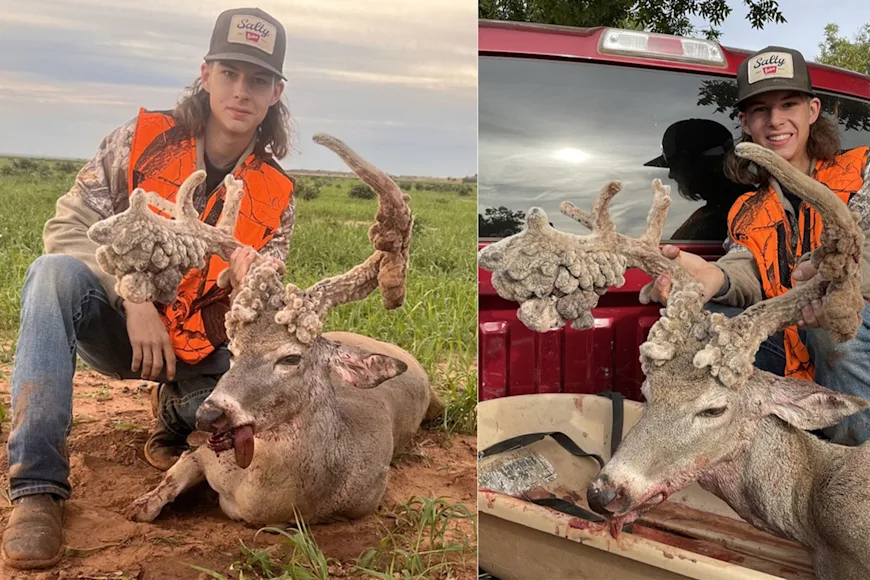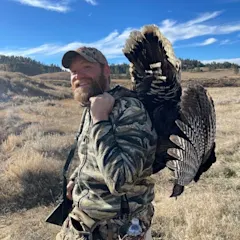A 17-year-old hunter from southwest Oklahoma shot the deer of a lifetime last weekend while stalking the edge of a milo field with his great-grandfather during the Sooner State’s youth season. When Major Edmonds walked up on the downed deer, he noticed its rare condition. Well into late October, it was still sporting full velvet. Instead of well-defined points, the whitetail’s rack was covered in odd-looking knobs, and there was a bulbous outgrowth on the end of its right main beam. It was a cactus buck.
“We keep cameras out, but we’ve never seen anything like this,” Edmonds tells Field & Stream. “We didn’t even know this buck existed.” He says he spotted the deer before sun-up and was already in range when legal shooting light began.
“When he stepped out that morning at 260 yards, we could just see solid black over his head,” Edmonds recalls. “That’s when we knew he was different than any other deer.”
Edmonds has hunted this part of southwest Oklahoma since he was old enough to walk, he says. He’s taken a few bucks during that time, but never anything in velvet. “We don’t get a chance to kill them in velvet because our season starts so late around here,” he says. “That’s why I was so excited to get this one. I’ve heard about cactus bucks, and seen photos of a few, but nothing that crazy with all the trash.”
According to the Oregon Department of Fish & Wildlife a “cactus buck” is a male deer that retains its velvet year round—usually as a result of testicular trauma, undescended testicles, or because of disease that affects blood supply to the testicles. Edmonds says the testicles on his deer were a lot smaller than normal if not completely absent. “At the time I killed it, we didn’t even know what to look for,” he says. “Maybe he only had one or maybe they just never dropped at all.”






